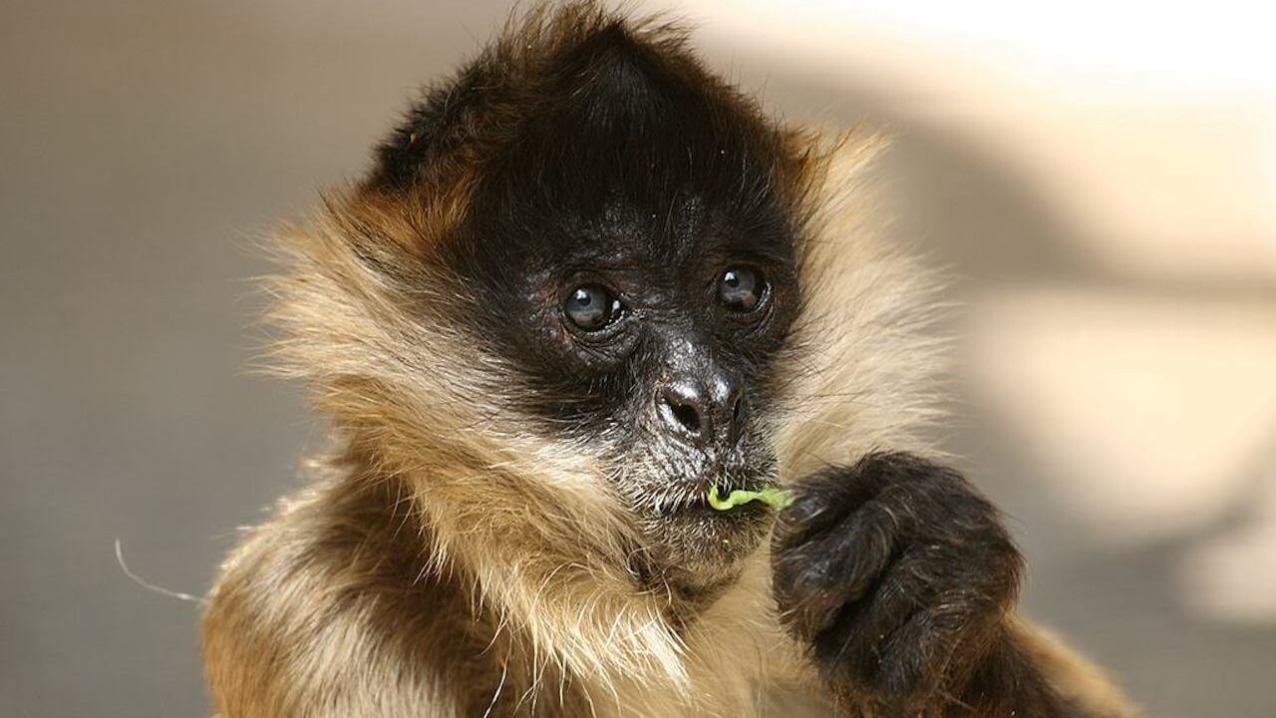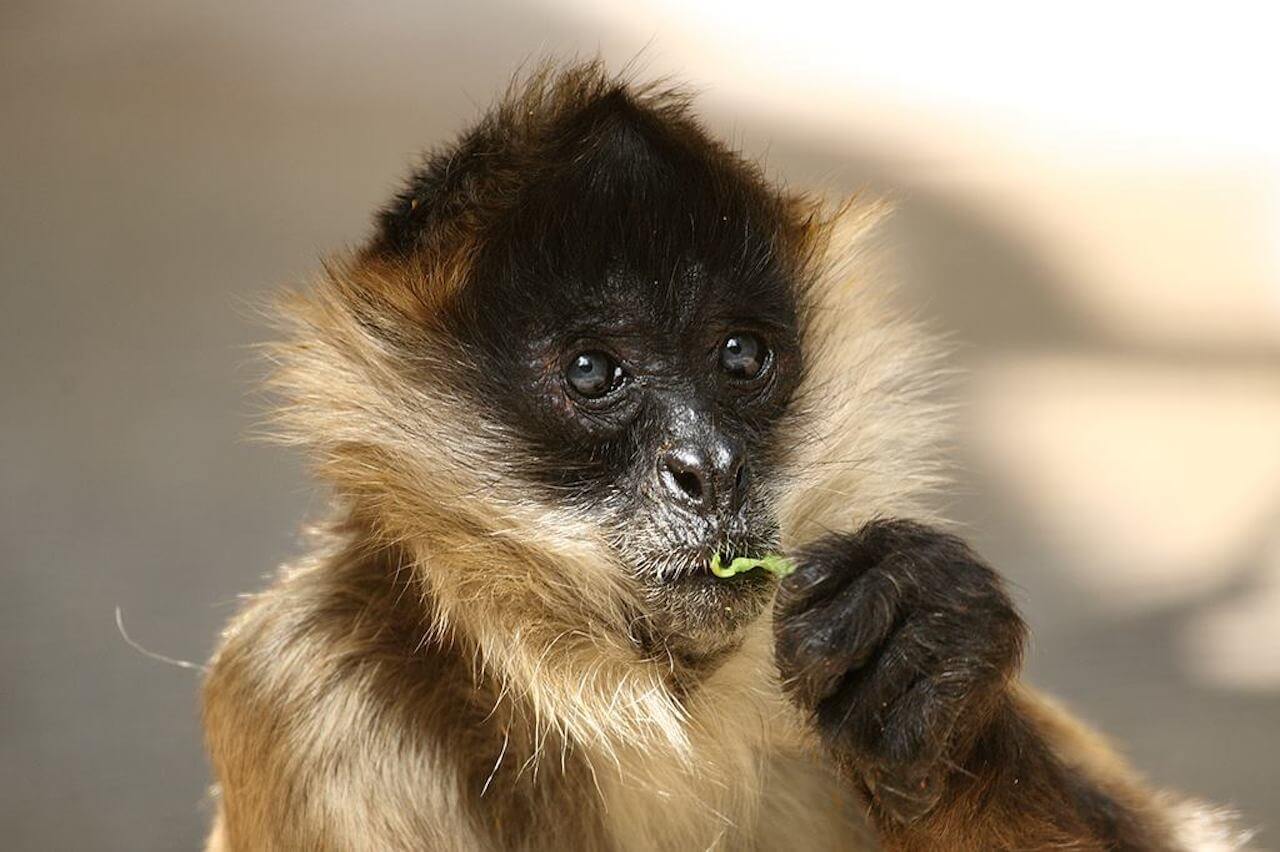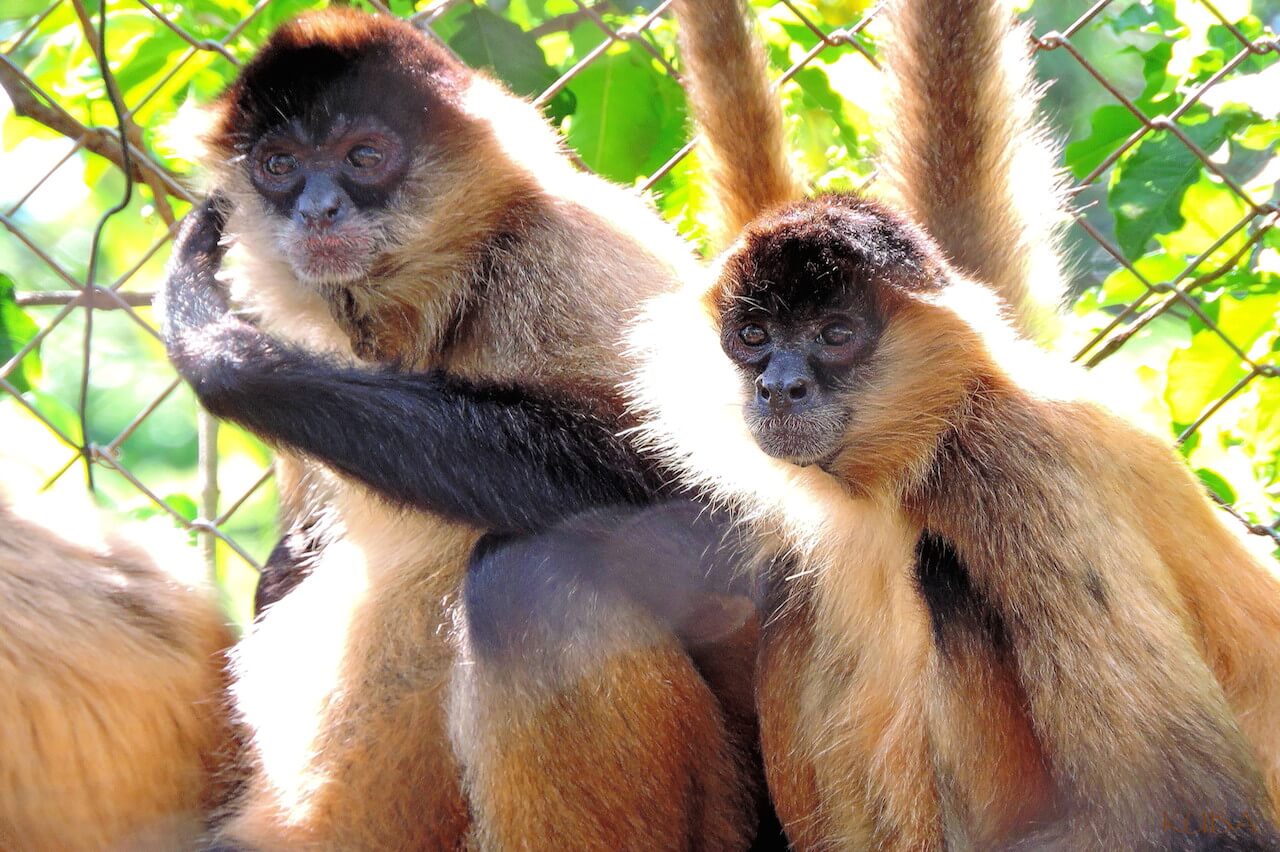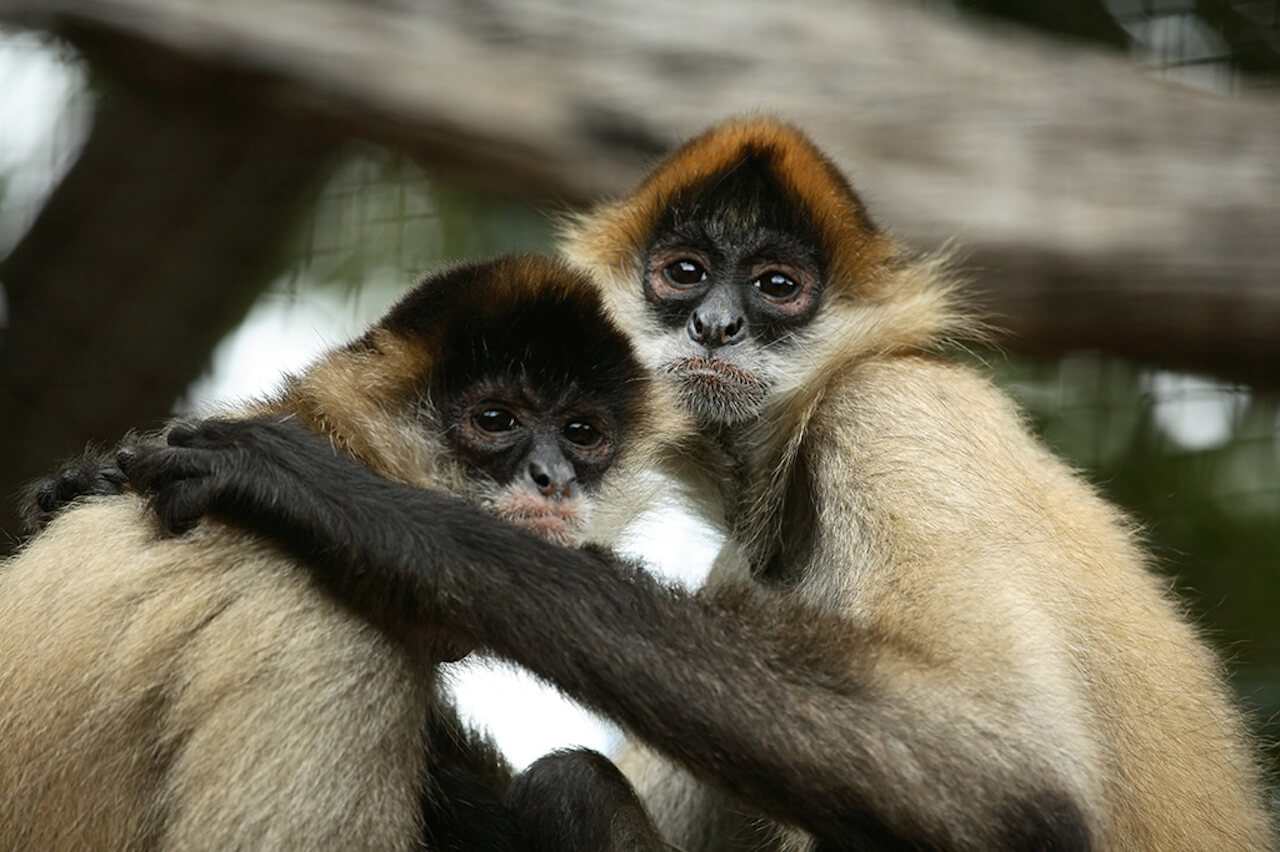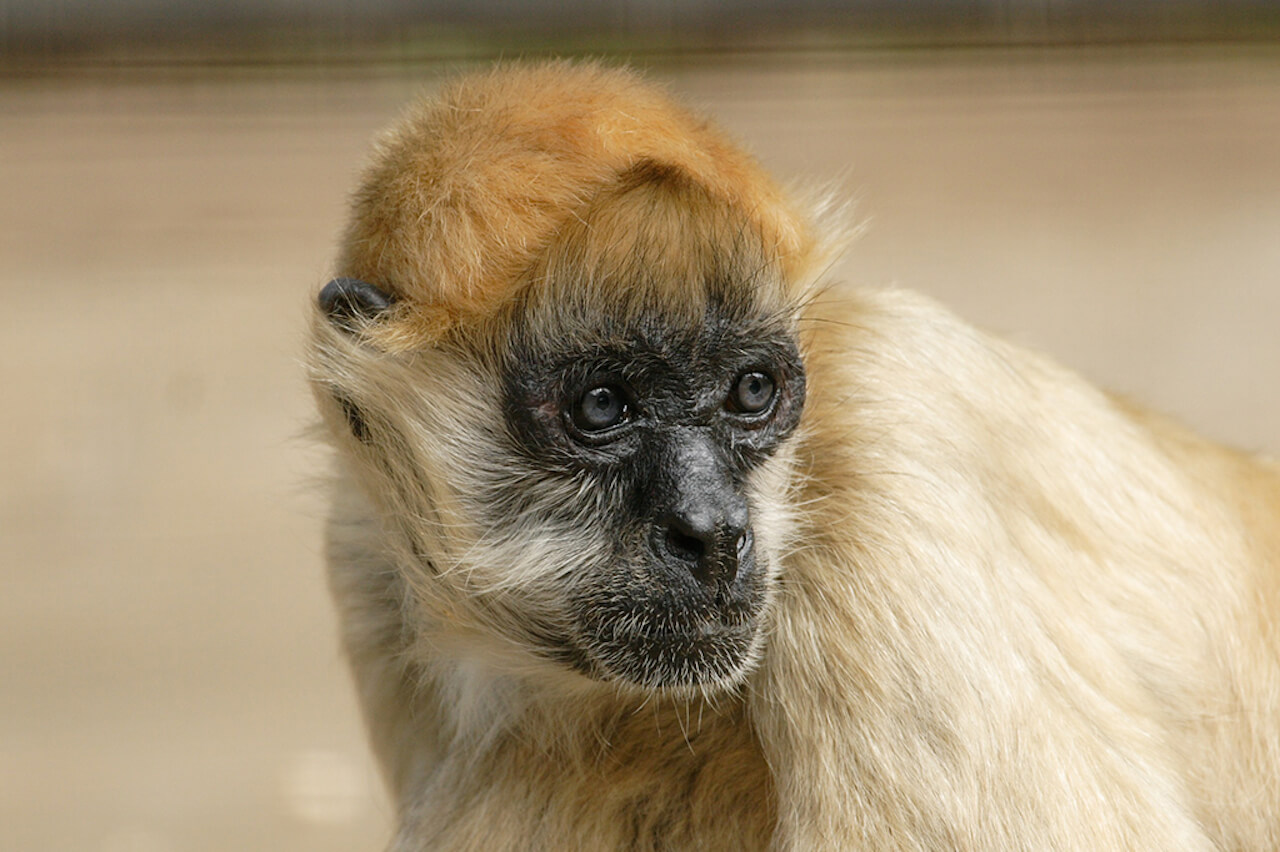ateles geoffroyi
Black-Handed Spider Monkey
About Me
Scientific Name: Ateles geoffroyi
Description
The black-handed spider monkey has a light to medium brown body and darker limbs, with the tail sometimes longer than the body. When the animal is on the lookout, it stands or walks on two feet, using the tail to hold on to a support. In the wild, the Spider monkey rarely comes down to the jungle floor.
Fun Facts
- The black-handed spider monkey is one of the largest New World monkeys, often weighing as much as 9 kg (20 lb).
- Sounds produced by Geoffroy’s spider monkey include barks, whinnies, squeals, squeaks and screams. Barks are typically alarm calls. Whinnies and screams can be used as distress calls, and are also made at dawn and at dusk.
- Kingdom: Animalia
- Phylum: Chordata
- Class: Mammalia
- Order: Primates
The black-handed spider monkey has a light to medium brown body and darker limbs with the hands and feet usually black in color. The tail is sometimes longer than the body. When the animal is on the lookout, it stands or walks on two feet, using the tail to hold on to a support. In the wild, the Spider monkey rarely comes down to the jungle floor.
This arboreal monkey has a prehensile tail that is muscular and tactile and is used as an extra hand. Both the underside and tip of the tail are used for climbing and grasping. When swinging by the tail, the hands are free to gather food. Acrobatic and swift, Spider monkeys move through the trees, with one arm stride covering up to 40 feet.
Spider monkeys live in evergreen rain forests, semi deciduous and mangrove forests, almost never coming to the ground. In these forests they live mostly in the upper canopy, preferring undisturbed high forest. They will be found in other forest types if habitat is limited, hunting pressure light and other primate competitors are not present. They are more flexible than their South American primate cousins in habitat adaptation.
Spider monkeys live in medium-sized, loosely associated groups of about 30 individuals, which fragment into subgroups of varying smaller sizes and composition. Unless there is an abundance of preferred food available, the subgroup size will consist of fewer than 4 animals. These groups will roam independently in the same general area; the only persistent association is that of a female with her offspring.
The females have a more active leading role than males. A troop’s social system seems to have evolved in parallel with the species food requirements which is directed at the most nutritious, large fleshy seeded fruits. According to recent research, the routes taken by a leading female seems to be planned in advance, are highly economical and will differ greatly from day to day. It was previously thought that daily feeding routes were always the same. It was also observed that males were not able to plan an economic and varied food route like the leading females; therefore they have a less varied diet. When food is scarce the groups tend to avoid overlapping territories.
Spider monkeys are diurnal and at night use sleeping trees which are usually tall enough so that the crown is free from the canopy beneath it having a broad open crown that has horizontally forked branches for prolonged resting postures. The sleeping trees are often chosen for their ability to provide a ready source of food. Sleeping high in a tree above the canopy also affords security from predators. When threatened, both males and females of the troop scare intruders away with rough barking and wild behavior displays. If this fails, they fragment into subgroups and run. They prefer retreat, so fights are rare.
Since the thumb is absent, the Spider monkey’s grooming is not as developed as in other primates. They scratch themselves with hands and feet, but most of their social grooming is mothers grooming their young.
A female is able to give birth between the ages of 4 to 5 years old, with an estrus cycle of 26 days. The birth interval is 17 to 45 months. Males are sexually mature at the age of 5 years. After a gestation period of 226-232 days, one entirely black baby is born. The baby is continuously carried by the mother, clinging to her ventrum and at about 5 months of age it will begin riding on her back. It will be dependent on its mother’s milk for 2 years.
Adult coloration is attained at the end of infancy and will not begin to manifest itself until it is 5 months old. Juveniles at the age of 24 to 50 months old never ride on their mother’s back but they will still stay close to her. They spend their time exploring, or chasing, grappling, and jumping on others. They will play with others their same age or with adults.
Their lifespan in the wild is about 27 years.
Spider monkeys are frugivorous preferring a diet of 90% fruit and seeds, feeding on the mature soft parts of a wide variety of fruits in which the seeds are swallowed along with the fruit. They also eat young leaves, flowers, aerial roots, sometimes bark and decaying wood, as well as honey. TA very small part of the diet consists of insects, insect larvae and birds eggs. They eat large quantities of food over a relatively short period of time and they tend to feed by suspension while hanging, climbing or moving. They do not pick fruit and carry it to another location to be eaten.
The lead female is often observed determining the forage route for the group; however if food is scarce they tend to divide into smaller groups.
In the Zoo they are fed celery, bananas, raisins, apples, oranges, carrots, monkey chow, dog chow, lettuce, and wheat bread.
Spider monkeys use several different types of locomotion: quadrupedal, using all four limbs for locomotion as seen while walking or running; suspensory locomotion used when hanging, climbing or moving through the trees and bipedalism, using only two limbs when leaping. Quadrupedal locomotion is usually observed if the monkey is on a stable relatively substrate free of obstacles. When they are using suspensory locomotion they may be brachiating (swinging with their arms from one branch to another while often maintaining a tail hold). The most commonly used pattern of body movement while in a feeding pattern is that of quadrupedal, climbing and suspensory locomotion. While traveling they mostly employ quadrupedal walking and running, suspensory locomotion and climbing.
Our subspecies of black-handed spider monkeys is considered to be of “Low Risk/Least Concern” for extinction according to the new, 2003 Red List of Threatened Species published worldwide by IUCN http://www.redlist.org/ . Ateles Geoffroyi geoffroyi is subject to trade controls under CITES Appendix II, which lists species that are not necessarily now threatened with extinction but that may become so unless trade is closely controlled.
Note, however, that ICUN classifies the nine other subspecies of Ateles Geoffroyi as follows: 3 are critically endangered, 3 are endangered, 2 are vulnerable and 1 is low risk, indicating a general worrisome condition that will continue to be studied and assessed. Other spider monkey subspecies’ have gotten onto the critical list due to losing their habitat, mature rain forests, to farming and due to being used as a food source. The two subspecies considered endangered by CITES Appendix I Ateles geoffroyi frontatus and panamensis, located in Costa Rica, Nicaragua and Panama, are also on the US Fish and Wildlife Threatened and Endangered Species list, called “TESS”.
DID YOU KNOW? … Spider Monkeys first arrived at the Honolulu Zoo on November 29, 1949 (a decade before Hawaii became a state!). Five young spider monkeys, one male and four females, arrived aboard the freighter, The American Wholesaler, out of Los Angeles, along with a number of other animals for the zoo who were purchased from an animal dealer. Today, in 2004, we have ten spider monkeys, two male and eight female, and all but one were born right here at the Honolulu Zoo. The last spider monkey to move to our zoo was Amigo, our oldest male at 13 years who arrived October 6, 1992 from another zoo. Amigo is the father of our two youngest, Pikake and Kahea.
Name Sex DOB
Kahea F 10-11-97
Amigo M 10-07-90
Pikake M 08-09-96
Bags F 01-01-70
Orangehead F 01-01-80
Spaz F 10-13-74
Friendly F 01-10-80
Blackhead F 01-01-80
Cricket F 09-13-83
Phoebe F 07-15-84
Comparative Placentation (detailed reproductive information), http://medicine.ucsd.edu/cpa/indxfs.html.
The Spider Monkey Project at Punta Laguna, http://www.sas.upenn.edu/~ramosfer/spmkpl.html.
The Primate Foundation of Panama, http://www.primatesofpanama.org/projects/prsp/primates.html.
Other Mammals
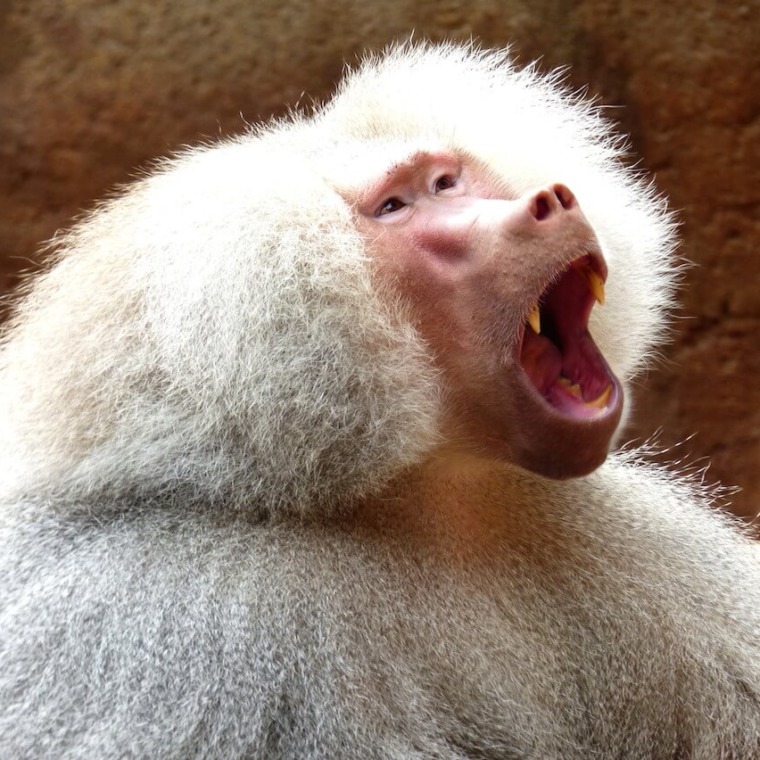
Sacred Baboons are common throughout northeastern Africa, but are extinct in the Nile region and Egypt, where they originally received their name and were worshiped by the ancient Egyptians.
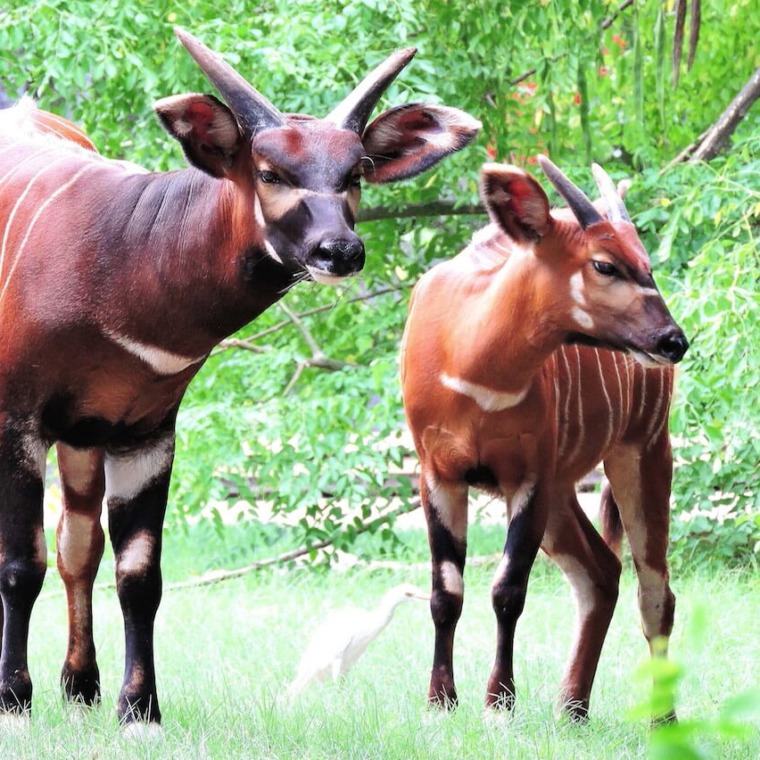
Bongo are most active at dawn and dusk, and often forage near the edges of wooded areas. They normally shy in the wild and flee into the forest for cover at the slightest provocation.
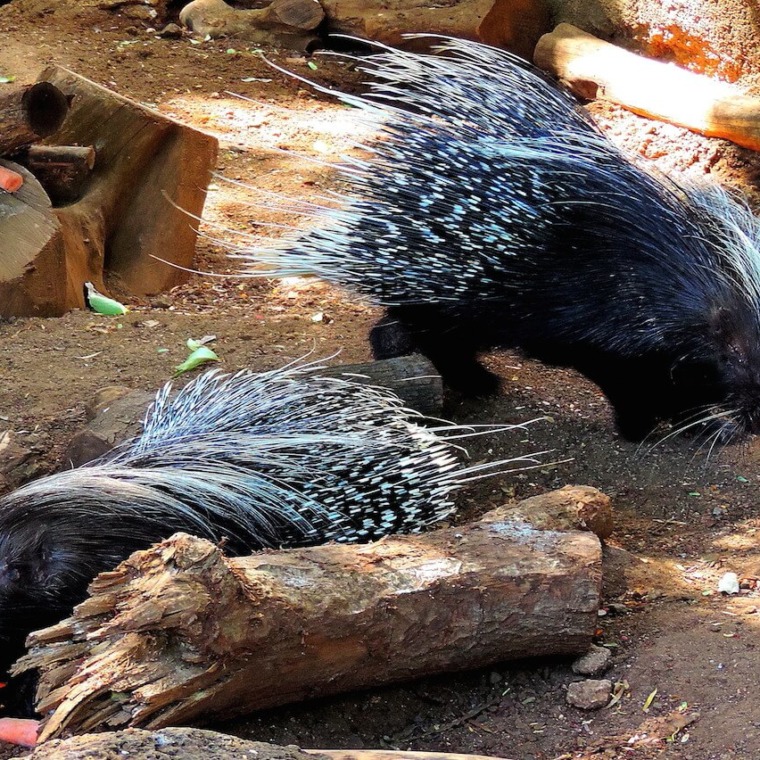
The North African crested porcupine is nocturnal. They are very adaptable and can be found in forests, on plantations, in rocky or mountainous areas as well as in deserts.
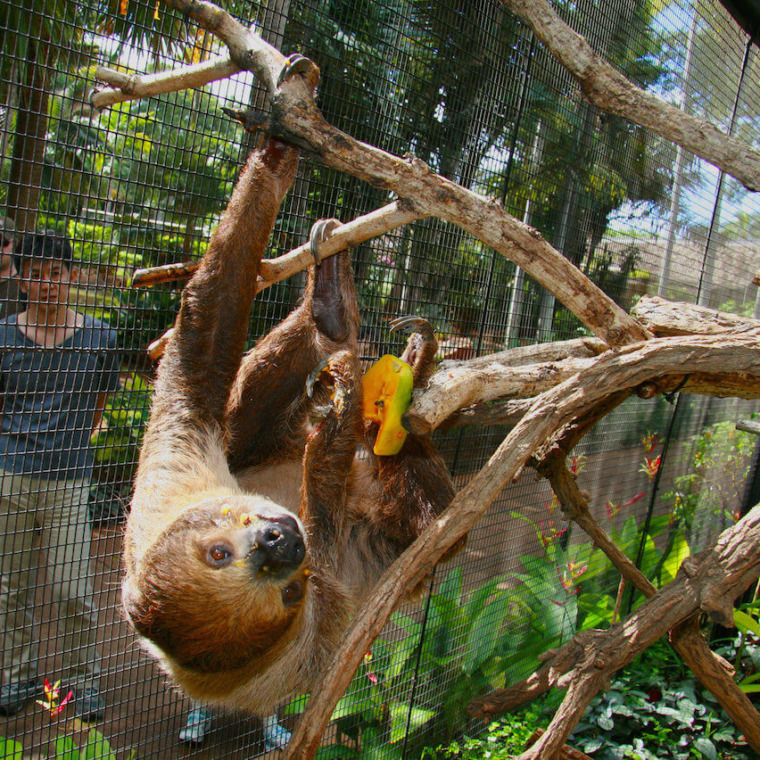
Sloths are found in Central and South America in the rain forest canopy. The Linne’s two-toed sloth is found in such countries as Nicaragua, Columbia, Venezuela, Surinam, Guyana, French Guiana, North Central Brazil, and Northern Peru.
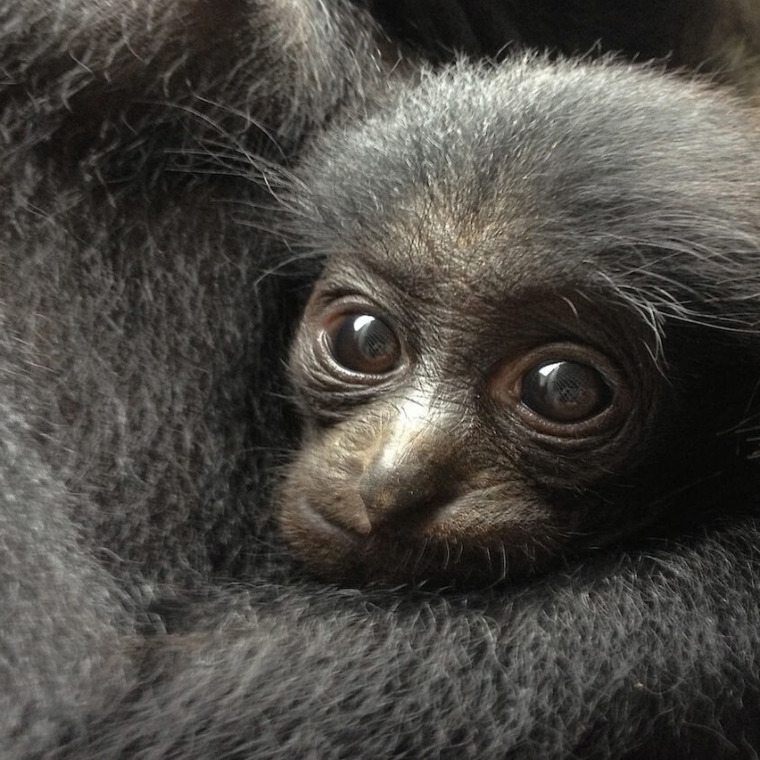
Siamangs range through southeastern Asia and are found in some numbers in the Malay Peninsula and Sumatra.


